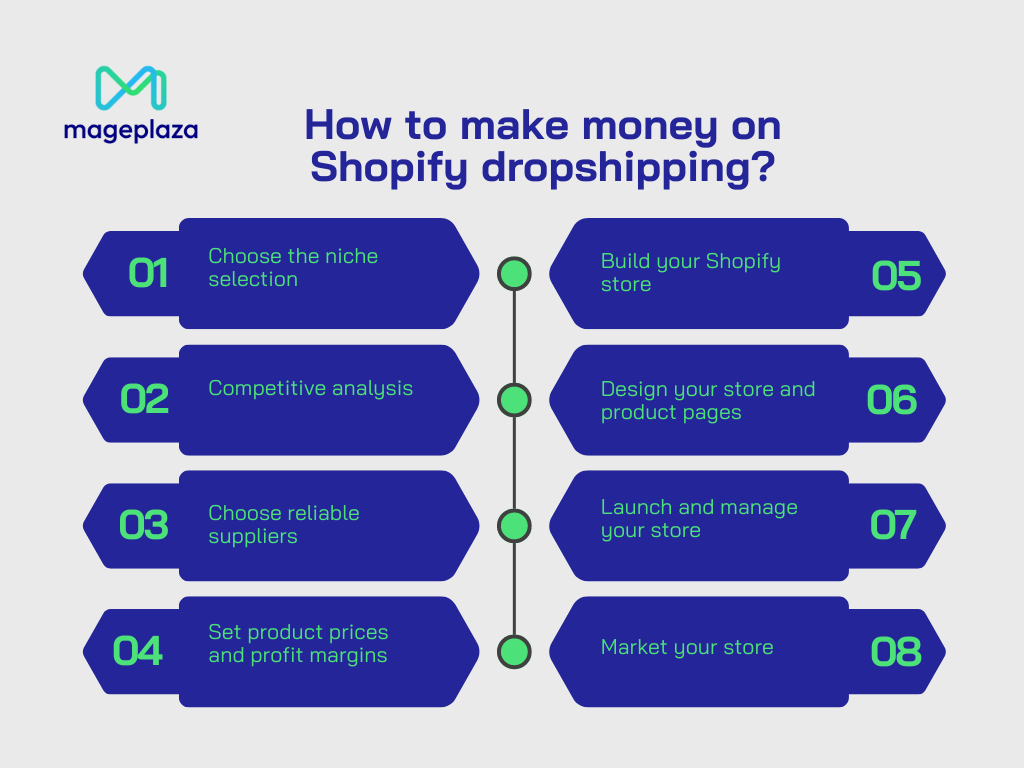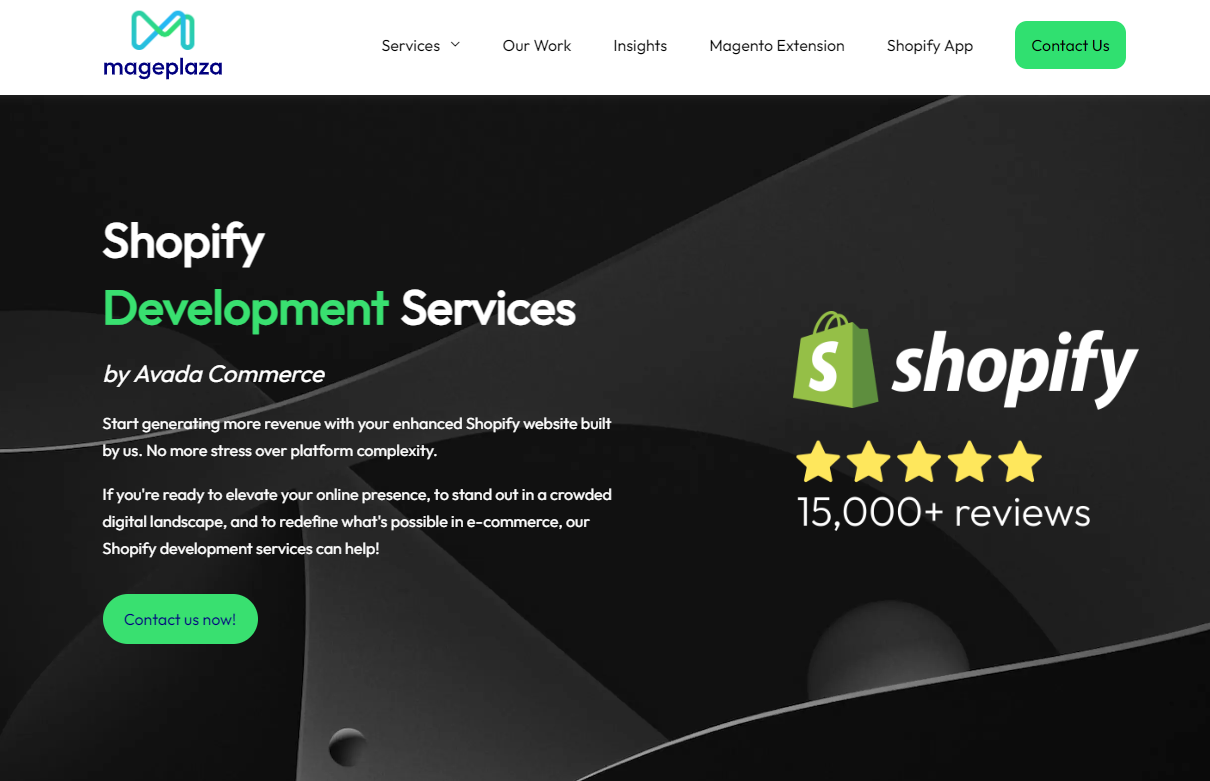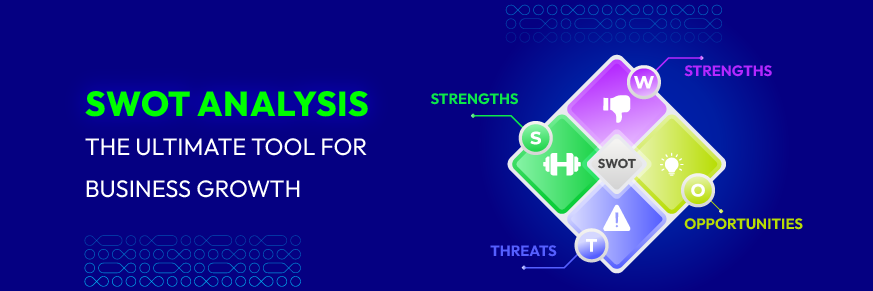How To Make Money On Shopify Dropshipping? [2024 Guide]
Summer Nguyen | 11-03-2023
![How To Make Money On Shopify Dropshipping? [2025 Guide] - Mageplaza](https://storage.googleapis.com/mageplaza.com/media/2023/10/03171814/Make-Money-On-Shopify-Dropshipping.png)
These days, online entrepreneurship is gaining popularity, offering financial independence through e-commerce. Therein, Shopify dropshipping is a potential solution for those seeking financial success.
But, the real concern is – How to make money on Shopify dropshipping? In this guide, we will explore Shopify dropshipping strategies for e-commerce entrepreneurs, providing knowledge and tools to thrive in the dynamic retail world, and help you find your own answers.
So, get ready to discover how to make money on Shopify dropshipping like a pro.
Table of Contents
Why is Shopify a Great Platform to Make Money on Dropshipping?
The global dropshipping market is expected to reach nearly $500 billion by 2026, highlighting the potential for success. Shopify’s user-friendly approach and dropshipping-specific tools can give you a strong foundation to capitalize on this growing market.

Here are some reasons why Shopify is popular among dropshippers:
- Low startup costs: Unlike traditional retail, dropshipping eliminates the upfront investment in inventory. With Shopify, you focus on marketing and customer service. Shopify’s pricing plans start at $29 per month, making it affordable to test product ideas without a huge financial risk.
- Ease of use: Shopify boasts a user-friendly interface with drag-and-drop features. Even beginners can create a professional-looking online store without needing coding knowledge. This allows you to get your dropshipping business up and running quickly.
- Scalability: As your dropshipping business grows, Shopify scales with you. Their app store offers a vast selection of tools to manage everything from marketing automation to inventory management from third-party dropshipping suppliers. Shopify also integrates with multiple payment gateways, allowing you to accept payments from a global customer base.
Related topic: What is Dropshipping? The Definition and Best Practices
How to make money on Shopify dropshipping?
This guide will take you through the essential steps of opening a successful online store using Shopify, a popular e-commerce platform.

Step 1. Choose the niche selection
Your niche isn’t just a category of products; it’s your target audience, their passions, and the problems you aim to solve. Finding the right niche can make the difference between a thriving business and one that struggles to gain traction. Here’s how to find your sweet spot:
- Identify your interests and skills: What are you passionate about? Do you have any specific skills that could translate into unique products?
- Research market trends: What are people buying online? Use tools like Google Trends or social media listening to identify burgeoning interests.
- Find a gap in the market: The “gap in the market” is your goldmine. Maybe it’s eco-friendly pet accessories, vintage-inspired home decor, or problem-solving gadgets for new parents. The more specific you are, the better you can target your audience.
Common mistakes you can face: You may choose a niche that’s too broad. A broad niche like “clothing” makes it difficult to stand out.
The advice is to target a sub-niche like “sustainable activewear for women” for a more focused audience.
Explore:
- Top 20 Top-Pick Products To Sell On Shopify In 2024!
- 30+ Most Amazing Shopify Dropshipping Products To Sell
Step 2. Competitive analysis
After identifying your niche, the next crucial step in your “how to make money on Shopify dropshipping” journey is to conduct a thorough competitive analysis. This process is not about imitation but about learning and finding ways to stand out in a crowded market.
At first, let’s identify strengths, weaknesses, and opportunities (SWOT Analysis). Here are the details:
- Strengths: What are your competitors doing exceptionally well? Is it their product quality, customer service, unique marketing approach, or perhaps their user-friendly website?
- Weaknesses: Every business has areas where they could improve. Are there gaps in their product selection? Are they slow to respond to customer inquiries? Do they lack a strong social media presence?
- Opportunities: These are the areas where you can potentially outshine your competitors. Can you offer faster shipping, more personalized customer service, or unique products they haven’t tapped into yet?
Then, coming to analyze pricing strategies and product offerings:
- Pricing: Take a close look at your competitors’ pricing. Are they offering discounts or promotions? What’s their average price point? And, can you offer competitive pricing while maintaining your profit margins?
- Products: You should analyze their product selection. Are they focusing on a broad range or specializing in specific items? Are there product categories missing from their offerings that you could fill? What’s the quality of their products like based on customer reviews?
Also, it would be better to learn from their marketing tactics
- Marketing channels: Identify the platforms where your competitors are most active and successful. Are they heavily investing in Facebook ads, Instagram influencers, or content marketing? Are they utilizing email marketing or SEO strategies?
- Messaging: Pay attention to how they communicate with their audience. What’s their brand voice and tone? What kind of content resonates most with their customers?
A common mistake is copying competitors entirely. Blindly mimicking what others do stifles innovation and makes you forget your unique value proposition. You can learn from their successes, but don’t be afraid to carve your own path. Focus on what makes your brand and products stand out.
Step 3: Choose reliable suppliers
The success of your Shopify dropshipping venture hinges on the reliability of your suppliers. They’re not just vendors; they’re your partners in delivering quality products and a seamless customer experience.
You need to do in-depth supplier research to select trustworthy suppliers. To vet potential partners, delve into reviews and ratings from other dropshippers on the supplier’s platform, independent review sites, and Shopify forums. Moreover, you can join Facebook groups and online communities dedicated to dropshipping to gain insights from the experiences of others.
Don’t hesitate to request samples from potential suppliers. In this way, you can assess the quality of the product firsthand, as follows:
- Check the Materials: Are they as described? Do they feel durable?
- Examine the Craftsmanship: Are there any flaws or inconsistencies?
- Assess the Packaging: Is it secure and presentable?
When you have selected the best suppliers, you need to create a negotiation term, including:
- Minimum order quantities (MOQs): Some suppliers require minimum order quantities, while others offer flexibility for dropshippers. Discuss MOQs and explore options for smaller test orders.
- Shipping options: Inquire about different shipping methods and their associated costs. Consider offering expedited shipping as a premium option for customers who need their orders quickly.
- Payment terms: Clarify payment methods, timelines, and any potential discounts for early payments or bulk orders.
- Returns and refunds: Discuss the supplier’s return policy in detail. Ensure you understand the process for handling returns, exchanges, and refunds.
Read our detailed guide: How to Find a Dropshipping Supplier
Step 4: Set product prices and profit margins
Pricing directly impacts your sales and profitability. You need to find a sweet spot that covers your costs and provides a healthy profit margin.
Here are how to determine the right price:
- Factor in all your costs: This includes product acquisition costs, shipping fees, payment processing fees, marketing expenses, and any overhead costs.
- Research market pricing: You need to analyze what your competitors are charging for similar products. However, don’t just copy their prices; use their data as a benchmark.
- Set a target profit margin: Aim for a margin that allows you to run your business sustainably while remaining competitive.
When setting product prices, there are some common mistakes you can face, such as:
- Underpricing: While low prices might attract initial customers, they can also lead to unsustainable profits and make your brand seem less valuable. Use cost-plus pricing to ensure you cover all expenses and have room for profit.
- Ignoring competition: Setting prices significantly higher than your competitors without a clear value proposition can lead to lost sales. Research competitor pricing to stay competitive while maintaining profitability.
So, is there any solution? Yes, of course. You can use cost-plus pricing to determine a base price that covers your expenses. Then, research competitor pricing to arrive at a final price point that strikes a balance between profitability and competitiveness.
Step 5: Build your Shopify store
Your Shopify store is your online storefront. It’s where you’ll showcase your products, process orders, and interact with customers. A user-friendly and visually appealing store is crucial for converting visitors into sales. You need to
- Sign up for a Shopify account: Shopify offers a free trial period, so you can experiment before committing to a paid plan.
- Choose a theme: Shopify offers a variety of free and paid themes that cater to different styles and functionalities. Consider themes optimized for your chosen niche.
- Customize your store: Use the theme editor to personalize your store’s layout, colors, fonts, and logo. It is important to ensure your store is mobile-friendly, as a significant portion of online shopping happens on mobile devices.
- Add product listings: Create detailed product descriptions that highlight features, benefits, and specifications. Use high-quality product images from different angles.
During building a store, some common mistakes can appear, such as:
- Choosing a complex theme that’s difficult to customize: A cluttered or confusing store layout can overwhelm customers and lead to them abandoning their carts.
- Using low-quality product images: Grainy or blurry images can make your products appear unprofessional and deter potential buyers.
To solve them, you need to focus on a clean, user-friendly theme that effectively showcases your products. Invest in professional product photography or use high-quality stock photos.
Read more: 2024 Ultimate Guide on How to Create a Shopify Store
Step 6: Design your store and product pages
The design of your store and product pages significantly impacts user experience and conversion rates. A well-designed store is not only aesthetically pleasing but also guides customers towards making a purchase.
Here are how to do it:
- Create a clear navigation menu: Make it easy for customers to find the products they’re looking for.
- Utilize high-quality visuals: Use hero images, banners, and product photos to showcase your brand and products effectively.
- Write compelling product descriptions: Highlight the unique selling points of your products and use clear, concise language.
- Include clear calls to action (CTAs): Tell customers what you want them to do, whether it’s adding a product to their cart or subscribing to your newsletter.
Common mistakes include:
- Overloading your pages with too much information: Too much text or cluttered visuals can overwhelm visitors and make it difficult for them to find what they’re looking for.
- Neglecting the importance of mobile responsiveness: Ensure your store layout and product pages adjust seamlessly for different screen sizes.
To avoid these mistakes, you should prioritize a clean and minimalist design that focuses on product information and high-quality visuals. Test your store on various devices to ensure optimal mobile responsiveness.
Read more: 10 Shopify Website Design Hacks for a Stunning Online Store
Step 7: Launch and manage your store
Launching your store is just the beginning. Effective ongoing management is crucial for long-term success. It is important to:
- Set up payment gateways: Allow customers to pay securely using popular payment methods like credit cards and PayPal.
- Configure shipping options: Offer a variety of shipping options at competitive rates.
- Test your store thoroughly: Ensure all functionalities work seamlessly before launching to the public.
- Promote your store: Utilize various marketing channels like social media, email marketing, and search engine optimization (SEO) to drive traffic to your store.
Like any step, you can face some mistakes like:
- Launching without a marketing plan: Without a plan to attract customers, your store will likely struggle to gain traction.
- Neglecting customer service: Provide excellent customer service to build trust and encourage repeat business.
At the moment, it would be better to develop a comprehensive marketing plan that targets your ideal customer base. You also need to prioritize responsive customer service to address inquiries and resolve issues promptly.
Step 8: Market your store
Even the most beautiful store won’t succeed without attracting customers. Marketing helps you reach your target audience and drive traffic to your store.
You can market your dropshipping store through several methods, such as:
- Leverage social media: Create engaging content on platforms like Instagram, Facebook, and TikTok to showcase your products and connect with potential customers.
- Utilize email marketing: Build an email list and send targeted campaigns to promote new products, special offers, and valuable content.
- Invest in SEO: Optimize your store content and product descriptions with relevant keywords to improve your search engine ranking and organic traffic.
Nonetheless, be careful with the errors:
- Spreading yourself too thin across all marketing channels: Focus on the platforms where your target audience spends their time.
- Neglecting the importance of content marketing: Create informative and engaging content that establishes you as an authority in your niche. This could include blog posts, infographics, or video tutorials related to your products or the broader industry.
We highly recommend you develop a targeted marketing strategy that focuses on the channels most likely to reach your ideal customer. Integrate valuable content creation to attract and engage your audience while building brand awareness.
Read more:
- Shopify SEO Tutorial 2023: A-Z Guide to Rank #1
- Shopify Dropshipping Marketing: 15 Vital Strategies for Success
How Much Does It Cost to Dropship on Shopify?
The total cost to dropship on Shopify can range from $25 to $399 per month. However, it can differ significantly depending on your particular business demands and the choices you make when setting up your store.

Here are some of the key costs associated with dropshipping on Shopify:
- Shopify subscription. Shopify offers different pricing plans, including Basic Shopify ($25/month), Shopify ($65/month), and Advanced Shopify ($399/month). So, the plan you choose depends on your business needs.
- Domain name. If you want a custom domain, you’ll need to purchase one. Domain prices can vary but generally range from $10 to $20 per year.
- Website design. You might need a premium theme to make your store look more professional. Premium themes can cost anywhere from $100 to $180.
- Dropshipping platform. Some dropshippers use apps or platforms to help automate product imports and order fulfillment. For example, Oberlo is a common choice for dropshipping, and Oberlo offers a free and paid plan starting at $29.90/month.
- Marketing. To attract customers, consider investing in advertising strategies like Google Ads, Facebook Ads, or influencer marketing, with a monthly budget of $200-$500, depending on your strategy.
- Transaction fees: Shopify charges transaction fees on every sale unless using Shopify Payments, varying from 2.4% + 30 cents to 2.9% + 30 cents per transaction, depending on your Shopify plan.
- Credit card processing fees. If you use Shopify Payments or any other payment gateway, you’ll incur credit card processing fees, typically around 2.4% to 2.9% + additional cents per transaction.
- Shipping costs. The cost to ship products to your customers will depend on your supplier’s rates and the shipping method chosen. Be sure to factor in shipping costs when setting your product prices.
Create a Shopify store for dropshipping now with Mageplaza

Ready to unlock the power of dropshipping? Mageplaza is your one-stop shop for creating a high-converting Shopify store. With 10 years of e-commerce experience and over 200 satisfied merchants globally, we equip you with the tools and expertise to succeed.
Our team of seasoned developers crafts beautiful and user-friendly Shopify stores that showcase your dropshipping products in the best light. We don’t just build stores, we build brands.
Here’s what sets Mageplaza apart:
- Expert Design: Stand out in the competitive dropshipping market with a unique and captivating storefront designed to convert.
- Seamless Customization: Tailor product listings, including titles, descriptions, images, and prices, for a truly personalized shopping experience.
- Proven Performance: Our secure and high-performing Shopify stores ensure a smooth customer journey, boosting trust and sales.
Don’t just take our word for it. With a proven track record and a team dedicated to your success, Mageplaza is the perfect partner to launch your profitable dropshipping business on Shopify.
GET STARTED WITH OUR SHOPIFY DEVELOPMENT SERVICES
The bottom line
So, how to make money on Shopify dropshipping? Hope that you’ve got your own answers. In conclusion, mastering the art of making money through Shopify dropshipping requires dedication, strategic planning, and adaptability.
Successfully building a thriving dropshipping business on Shopify requires a careful selection of profitable niches, quality product sourcing, online store optimization, and exceptional customer service, despite the competitive nature of the field.
Remember that persistence, continuous learning, and staying updated with industry trends are important for lasting success in e-commerce. With the right mindset, your Shopify dropshipping journey can provide financial freedom.








